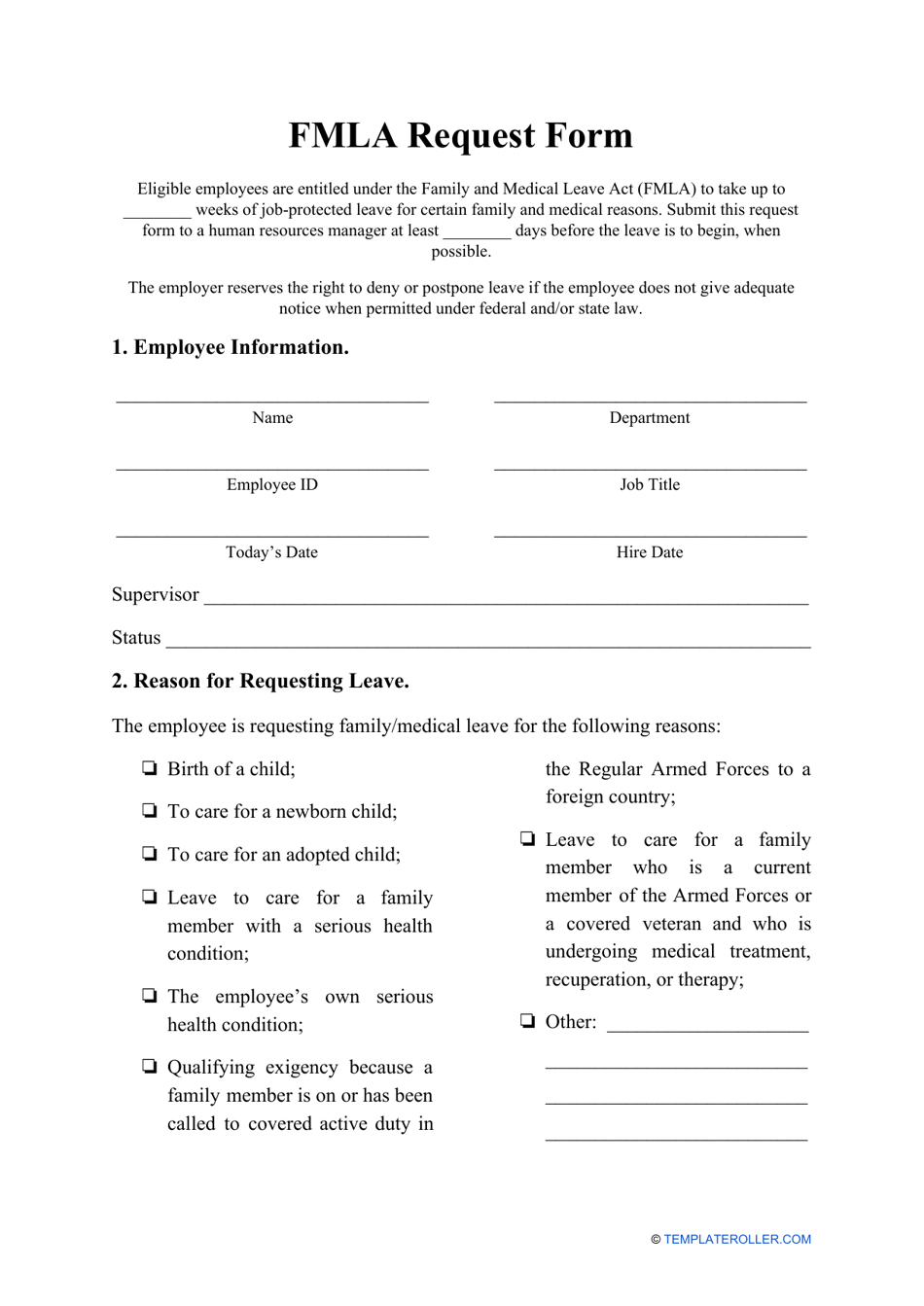Doctor's Guide to FMLA Paperwork: Essential Information

Understanding the Family and Medical Leave Act (FMLA) is crucial for employees who need to take time off for health-related reasons, without the fear of job loss. FMLA is a labor law in the United States that provides eligible employees with up to 12 weeks of unpaid, job-protected leave per year. This guide aims to demystify the often complex process of FMLA paperwork, offering doctors, and their patients a clear path to successfully navigating this benefit.
What is FMLA and Who Qualifies?

The FMLA, enacted in 1993, allows employees to take leave for their own serious health conditions, to care for a family member with a serious health condition, for the birth or adoption of a child, or for certain military-related exigencies. Here's what you need to know about eligibility:
- Eligible Employers: Companies with 50 or more employees within 75 miles.
- Eligible Employees: Must have worked for the employer for at least 12 months, have at least 1,250 hours of service during the previous 12 months, and work at a location where the employer has at least 50 employees within 75 miles.
Steps to FMLA Certification for Medical Conditions

When an employee needs to apply for FMLA due to a medical condition, here are the steps that a healthcare provider should take:
- Verification of Eligibility: Confirm if the employee meets the criteria for FMLA leave.
- Medical Certification Form: The employer will provide a form (Form WH-380E) that the employee brings to the doctor for certification. The doctor must:
- Fill out the medical facts section, including diagnosis, date of onset, duration, and medical necessity for leave.
- Describe the treatment plan if applicable.
- State the expected return-to-work date or clarify if the leave will be intermittent.
- Return the Completed Form: The healthcare provider must return the completed form to the employer within the deadline, usually 15 days from the request.
🚨 Note: Ensure that all sections of the medical certification form are completed accurately to prevent delays or denials.
How Doctors Can Support Employees During FMLA Leave

- Provide Detailed Documentation: Make sure the medical documentation is specific enough to justify the leave but adheres to HIPAA confidentiality rules.
- Regular Updates: If the employee's condition changes, provide updates to the employer to adjust leave time accordingly.
- Intermittent Leave**: Clarify if the leave will be intermittent, providing a schedule for such leave where possible.
Common Challenges and Solutions

FMLA paperwork can sometimes be a maze. Here are some common challenges and solutions:
| Challenge | Solution |
|---|---|
| Incomplete Paperwork | Ensure all necessary information is included. Use checklists or templates to avoid missing details. |
| Employer's Request for Recertification | Recertify when asked or if there is a significant change in the employee's condition. |
| Confusion Over Return-to-Work Dates | Be as precise as possible or provide a range if exact dates cannot be determined. |

To wrap up, navigating FMLA paperwork is pivotal for doctors to assist their patients effectively. The correct completion and timely submission of FMLA forms not only ensure that patients receive the benefits they're entitled to but also contribute to a smoother leave process, reducing stress and potential job-related complications. Ensuring eligibility, providing detailed yet confidential medical information, and staying responsive to changes in the patient's health status are key elements to focus on. This comprehensive guide has explored the essential steps, from initial eligibility checks to addressing common challenges, to facilitate a seamless FMLA leave experience.
How long does an employer have to respond to an FMLA request?

+
The employer must provide employees with notice approving or denying their FMLA request within five business days of the employee’s request. However, for medical certification, they typically have 15 days to respond after receiving the completed form from the healthcare provider.
Can an employee be fired for taking FMLA leave?

+
No, an employee cannot be fired for taking FMLA leave. However, if there’s misconduct or a violation of company policies unrelated to the leave itself, termination might still occur.
What happens if an employee exhausts their FMLA leave?

+
If an employee uses up all 12 weeks of FMLA leave, their job might not be protected under FMLA any longer. However, the employer could offer other forms of leave or consider a reasonable accommodation under the Americans with Disabilities Act (ADA).